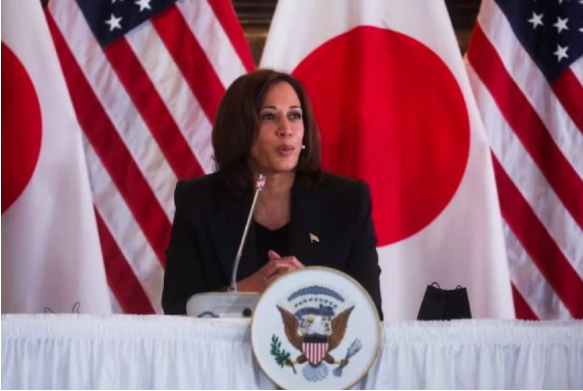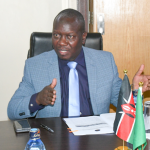As Kamala Harris takes the stage at the Democratic National Convention in Chicago this week as the party’s presidential nominee, she’ll do so with the knowledge that many of those cheering her on once doubted her potential.
At 59, Harris has faced skepticism from some within her party regarding her suitability for America’s highest office—even from President Joe Biden, whom she continues to serve as vice-president. Since being selected as the Democratic nominee in mid-July, Harris has experienced a surge of enthusiasm, evident in polling, fundraising, and the large crowds at her rallies nationwide.
However, this political momentum was far from guaranteed. After a brief and unsuccessful presidential campaign in 2019, Harris began her vice-presidency with challenges including high-profile interview gaffes, staff turnover, and low approval ratings. Throughout her three and a half years in the White House, she struggled to connect with American voters.
Despite these early setbacks, Harris has used the time since to refine her political acumen, build loyal coalitions, and establish credibility on key issues such as abortion rights, which resonate with the Democratic base. She has effectively prepared for this pivotal moment.
As she formally accepts the Democratic nomination on Thursday, Harris will have the chance to reintroduce herself to the nation with fewer than 80 days until the election, where she could become the first female president. She will also need to demonstrate her ability to lead a party that has been divided over the war in Israel and Gaza, and overcome any remaining doubts about her capability to defeat former president Donald Trump in a closely contested race.
Path to the White House
Before Kamala Harris emerged as a national figure, she was already recognized as a rising star in the Democratic Party. Her reputation was bolstered by her endorsement from President Barack Obama during her 2010 campaign for California Attorney General.
However, her career has been marked by a mix of achievements and controversies. As San Francisco District Attorney, she faced criticism for her decision not to seek the death penalty for a man convicted of killing a young police officer. Later, as Attorney General, she upheld California’s death penalty despite her personal opposition.
After reaching the pinnacle of California state politics, Harris was elected to the U.S. Senate on the same night that Donald Trump defeated Hillary Clinton in the 2016 presidential election.
During her brief Senate tenure, she gained national attention for her incisive questioning of Supreme Court Justice Brett Kavanaugh during his contentious 2018 confirmation hearings. One memorable exchange saw her ask Kavanaugh, “Can you think of any laws that give government the power to make decisions about the male body?”—a question that resonated widely on social media and late-night television.
Like Obama, Harris was a young senator with grand ambitions. Midway through her first term, she launched a presidential campaign that, like her current bid, was initially met with great enthusiasm. Her campaign kickoff in Oakland, California, drew over 20,000 attendees. Yet, despite this strong start, her presidential bid faltered before the first primary ballots were cast.
Harris struggled to establish a distinct political identity in a crowded field that included Biden and progressive Senator Bernie Sanders. Critics argued that while she supported a variety of progressive policies, she lacked a clear, consistent conviction. A notable moment in June 2019, when she challenged Biden’s record on racial desegregation of schools, led to a temporary surge in her poll numbers.
Harris confronted Biden over his past interactions with segregationist senators and his opposition to bussing students to promote school integration.
“There was a little girl in California who was part of the second class to integrate her public schools, and she was bussed to school every day,” Ms Harris said. “And that little girl was me.”
Campaign infighting and indecision on which issues to prioritize ultimately derailed Kamala Harris’s presidential bid. Her campaign, according to Kevin Madden, an adviser on Mitt Romney’s presidential campaigns, was plagued by “a lot of rookie mistakes.” Madden noted, “The substance needed to pass the commander-in-chief test and to clearly communicate with voters was lacking, allowing her opponents to fill in the gaps for her.”
Despite these setbacks, eight months later, Joe Biden set aside their primary rivalry and selected Harris as his running mate. She became the first woman of color nominated for this position, and in January 2021, she made history as the first female vice-president in U.S. history.
However, Harris’s tenure as vice-president began with a rocky start. Five months into her role, she faced public scrutiny during a foreign trip to Guatemala and Mexico, intended to highlight her work on economic initiatives to address migration from Central America. The trip was overshadowed by a tense interview with NBC News’ Lester Holt, where she was repeatedly questioned about her absence from the U.S.-Mexico border.
During a subsequent press conference with Guatemalan President Alejandro Giammattei, Harris attempted to steer the narrative by delivering a stern warning to potential migrants: “Do not come.” While this statement aimed to address migration concerns, it drew criticism from progressives and was poorly received on social media, despite similar comments from other administration officials.
Harris’s allies criticized the White House for inadequate preparation and for assigning her an unwinnable issue. They argued that as the first female, African-American, and Asian-American vice-president, she faced unrealistic expectations from the outset, leaving her with little time to establish herself.
“There was immense pressure in the beginning to own things,” said one former aide who was granted anonymity to speak candidly about their time in the White House.
In the months following her appointment, Kamala Harris faced increasing scrutiny. She experienced high staff turnover, a wave of negative media coverage, and lackluster media appearances. The Covid-19 restrictions further limited her public engagements, contributing to the perception that she was largely invisible.
Critics began to label her as a mere prop, standing behind President Biden at bill-signing ceremonies, similar to how her white male predecessors had. According to aides, this criticism led to a decision to exclude her from such events, which only fueled further accusations of her being absent.
Jamal Simmons, a veteran Democratic strategist who joined her team as communications director, observed that public expectations of Harris were unrealistic. “People expected her to perform as vice-president like Michelle Obama, but the role was designed more for figures like Al Gore or Mike Pence,” he noted.
To counter her negative public image, Harris took on a more prominent foreign policy role. She visited Poland following Russia’s full-scale invasion of Ukraine in 2022, conducted bilateral meetings in Asia amid rising tensions with China, and represented Biden at the Munich Security Conference that same year.
However, a political shake-up in May 2022 significantly altered the trajectory of her vice-presidency. A leaked draft opinion revealed the Supreme Court’s plans to overturn Roe v. Wade, the landmark ruling that had protected American women’s federal right to abortion for nearly 50 years.
Harris seized the opportunity to champion this issue, taking on a leading role on abortion rights, an area Biden, a devout Irish Catholic, had been hesitant to engage with directly.



